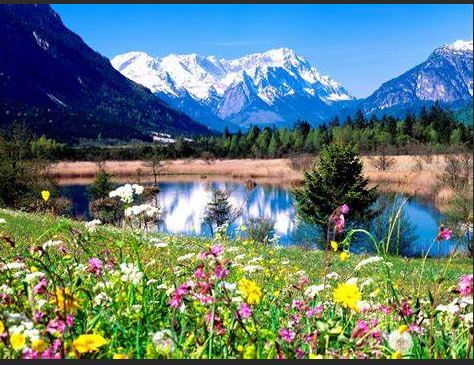
GREETINGS FROM TAHOE CALL CENTER:
Located in Nevada, Tahoe Call Center is a small family-run business with a big heart, ready to help with your communication needs. Since 2012 we have assisted clients coast to coast in varied economic and emergency climates: wild-fires, blizzards, ice storms, pandemics, and unforeseen events (with affordable, competitive pricing that didn’t add further trauma).
Rain or shine, short-staffed or no staff, we help keep your business going: Answering phones / taking messages / providing information / Taking credit card orders / collecting and transmitting confidential information via email, SMS, or API (linking with existing systems). Our agents are trained to process sensitive information with courtesy, respect, and maintain the strictest of confidence. We also help with those intermittent overflow call surges during business hours and cover your customer inquiries when you are closed. “Always here so you don’t have to be” – We help keep things running smoothly 24/7, 365 days a year. Tahoecall.com
MAY 2022 Blog: 18 – M. Hines
As the saying goes, “March winds blow,” and “April Showers bring May flowers (though not as many as times past). This transitional time in the Sierras is like no other. Wind, Rain, Snow, Ice, warm one minute, freezing the next. It is mercurial, ever-changing, and very unpredictable –even with our advanced weather technologies. For Northern Nevada and many places in the West, March, April, and May subject our days to an ‘up in the air’ uncertainty. As much as we wish it were different, we know not to assume the day will end as it began with clear, sunny skies. Spring is the mediator between Winter’s ‘sound and fury’ and Summer’s inevitable arrival. But there is another season that has become a critical concern more and more as our traditional seasons change. That is the season of wildfire.

The western states are wide, vast, and composed of people as unique as the varied state topographies. But one anxiety western states all share is the fire season of summer and fall that, depending on precipitation, can sometimes last into December. With changes in our climate resulting in extended droughts, wildfires have morphed into an even more deadly phenomenon known as firestorms; out-of-control madness that skips across the forest canopy. How do you fight a fire that’s up in the air?
Recent years have seen these horrific events ravage communities and turn years of efforts and memories into smoldering ash. Water and resource scarcity, drought, and excess combustible material combine to make a volatile cocktail of catastrophic results, and, tragically, not much has been accomplished to address any of these contributing issues.

While financial and legal resources can (and should be) increased to educate, clear underbrush, practice responsible forestry, and provide enough resources to protect all those putting their lives on the line to fight the fires for us. But, even if all those were addressed, how do you fix a drought?
The climate in the west and other places has been changing for years. We’ve noticed the differences, subtle or strange, but have been explaining them away as unusual flukes. Nature’s weakness is something most can’t comprehend, so our solution has been to not acknowledge it exists. But, each season we are faced with more and more change as our climate struggles to adapt.

We are too dry here in the west and the eastern and southern states are seeing more and more flooding. This change didn’t happen overnight, it’s been occurring for decades. Previous warnings and concerns were brushed away or lost within this theory or that theory; assuaging or diminishing concerns about the up and down temperature journey that has brought us to where we are today. It’s easy to look back and point the finger of blame for ‘how’ this happened and, despite the justice that blame may or may not serve, decrying and demonizing people or policies, we allowed to bring us to this point in time, just furthers the postponement of finding answers for what can be done to fix or contain the results. Whether intended or not, we are all culpable.

While it may not be possible to reverse all the damage to our ecosystems, there are things we can do. For starters, we need to take action. Solutions exist, but action seems just as elusive as it has been through these past decades. Evidence shows, however, action needs to happen–and happen soon. Ignoring the problem will only add expense and trauma. Solution requires change; change requires courage and investment–investment in all of us, for all of us.
Change is uncomfortable, unpopular, and frightening for many. But investing in everyone’s safety and future is never a wasted effort. Funding can always be found for things that are politically advantageous to one party or the other. But a changing climate is politically neutral. Nature looks out for itself. A changing climate is something that affects everyone, everywhere. There is no escape. Taking action seems daunting, but we need to be adults, stand up, take responsibility, and focus on what ‘we can’ fix, correct the things ‘we can’ that are causing the changes, and work on ways ‘we can’ adapt our lifestyles.


We are called once again by Acknowledgement and Responsibility; two inseparable components of restitution. It is a crossroad in time (like others in our past) that requires us to be the grown-ups; to step away from the endless chorus of blame and blinding obtuseness; to open our eyes and minds, accept this problem not only exists but is a critical life-security threat, take chances, roll up our sleeves, and say, “we can fix this.”
We cannot afford to excuse, we cannot afford to delay. Previously pushed away for future generations to solve, this problemed piper has arrived at our generation’s doorstep demanding payment. We have answers, we just need to ‘move our feet’ and act. We have come to that place in the road where ‘we can’t afford not to‘. When past mistakes are acknowledged and responsibility is taken, new concepts and ideas can combine and solutions are born. We can do this.
